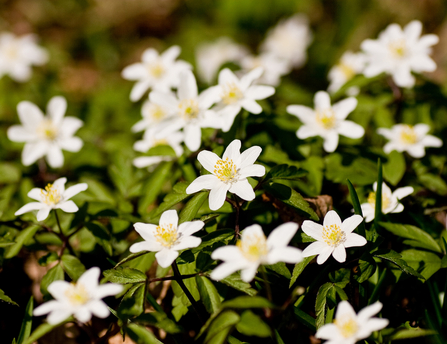The removal of diseased ash trees and dying poplar trees as well as the thinning out of some beech trees will allow more light through the tree canopy, which will encourage more growth of woodland flowers and scrub.
Dominique Cragg, reserves officer at Worcestershire Wildlife Trust who is undertaking the work, explained “It might seem odd that taking out trees from a woodland can benefit wildlife but, when done right, this really is the case.
“Many of our woodland birds don’t nest in trees but in scrubby vegetation that’s often much closer to the ground than we’d think. Chiffchaffs, for example, can nest right alongside woodland paths, which is why it’s so important to keep to paths and to keep dogs on leads when in woodland.

